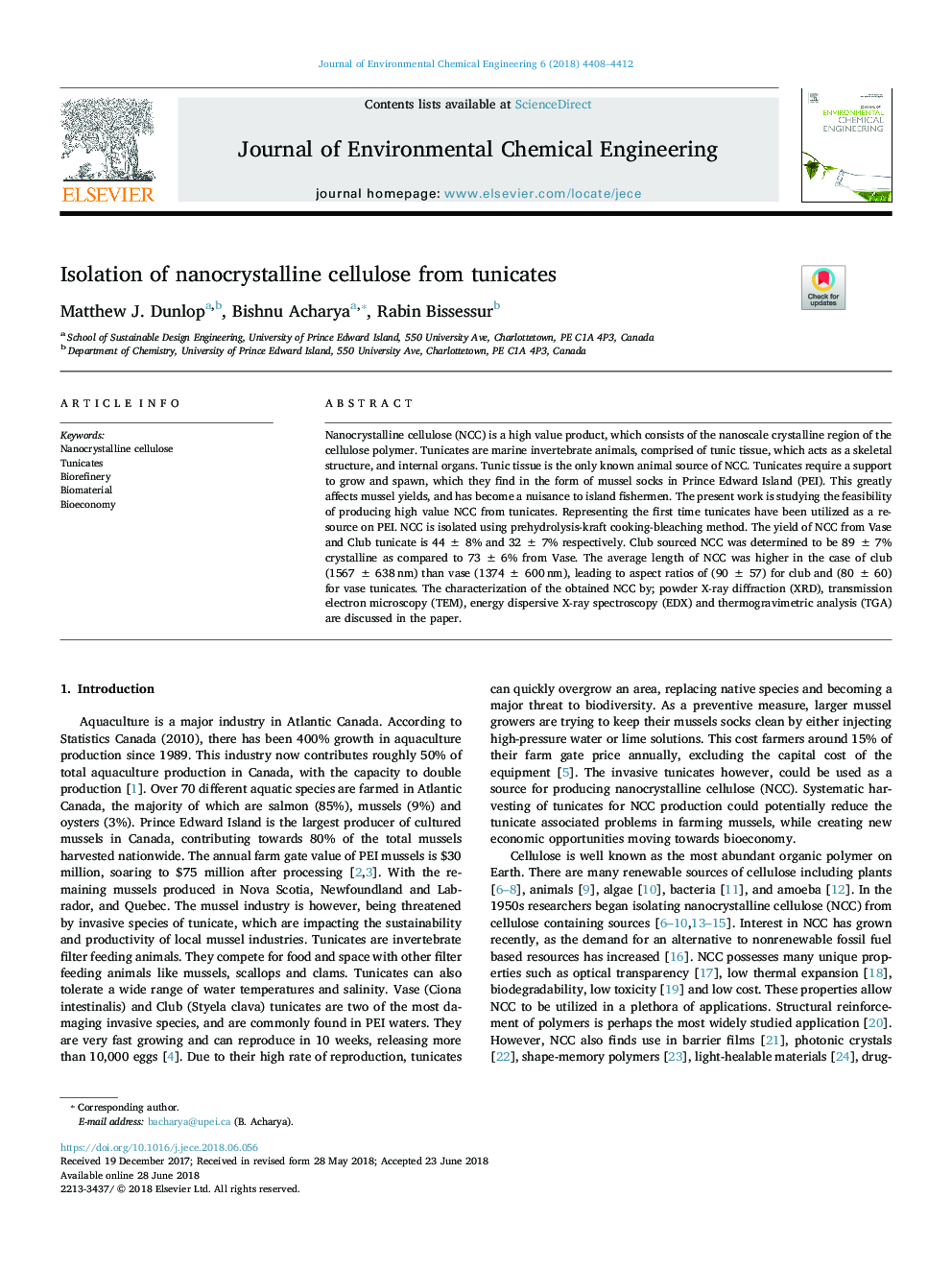| Article ID | Journal | Published Year | Pages | File Type |
|---|---|---|---|---|
| 6663892 | Journal of Environmental Chemical Engineering | 2018 | 5 Pages |
Abstract
Nanocrystalline cellulose (NCC) is a high value product, which consists of the nanoscale crystalline region of the cellulose polymer. Tunicates are marine invertebrate animals, comprised of tunic tissue, which acts as a skeletal structure, and internal organs. Tunic tissue is the only known animal source of NCC. Tunicates require a support to grow and spawn, which they find in the form of mussel socks in Prince Edward Island (PEI). This greatly affects mussel yields, and has become a nuisance to island fishermen. The present work is studying the feasibility of producing high value NCC from tunicates. Representing the first time tunicates have been utilized as a resource on PEI. NCC is isolated using prehydrolysis-kraft cooking-bleaching method. The yield of NCC from Vase and Club tunicate is 44â¯Â±â¯8% and 32â¯Â±â¯7% respectively. Club sourced NCC was determined to be 89â¯Â±â¯7% crystalline as compared to 73â¯Â±â¯6% from Vase. The average length of NCC was higher in the case of club (1567â¯Â±â¯638â¯nm) than vase (1374â¯Â±â¯600â¯nm), leading to aspect ratios of (90â¯Â±â¯57) for club and (80â¯Â±â¯60) for vase tunicates. The characterization of the obtained NCC by; powder X-ray diffraction (XRD), transmission electron microscopy (TEM), energy dispersive X-ray spectroscopy (EDX) and thermogravimetric analysis (TGA) are discussed in the paper.
Related Topics
Physical Sciences and Engineering
Chemical Engineering
Chemical Engineering (General)
Authors
Matthew J. Dunlop, Bishnu Acharya, Rabin Bissessur,
